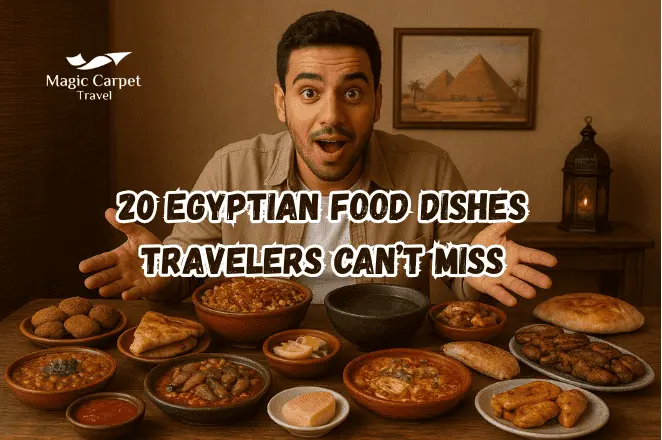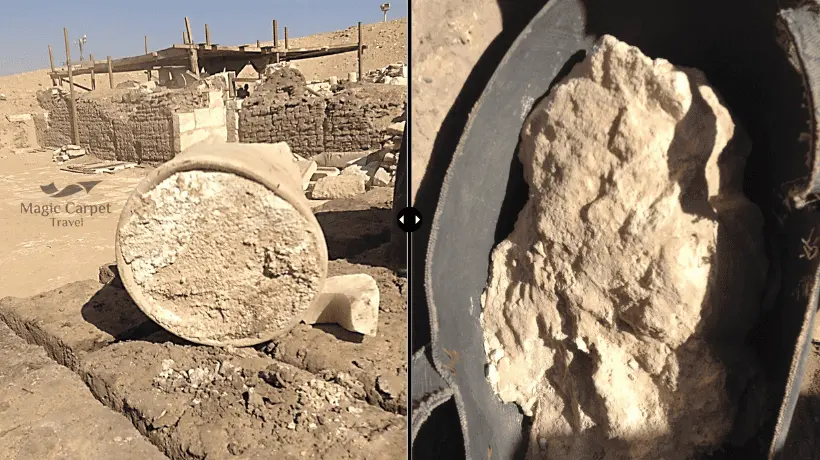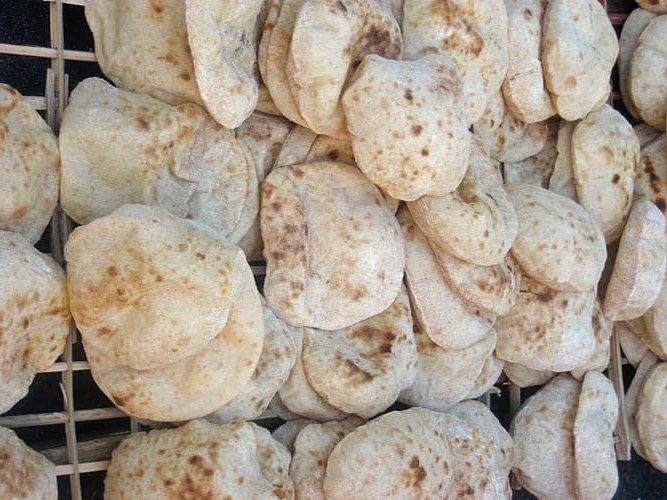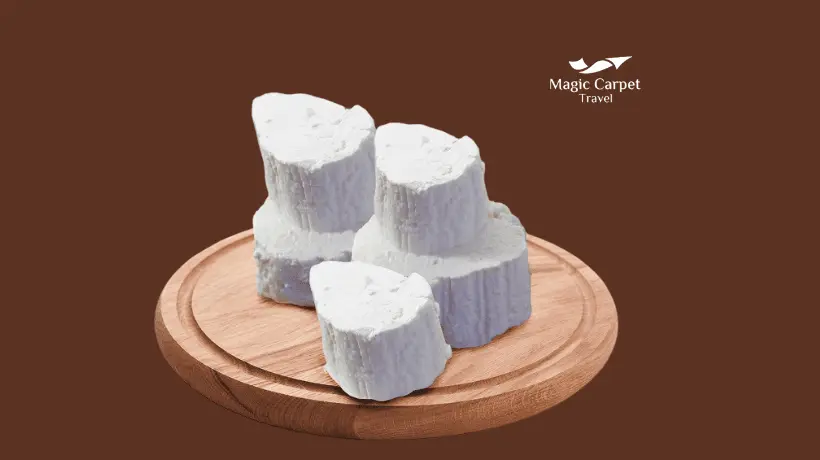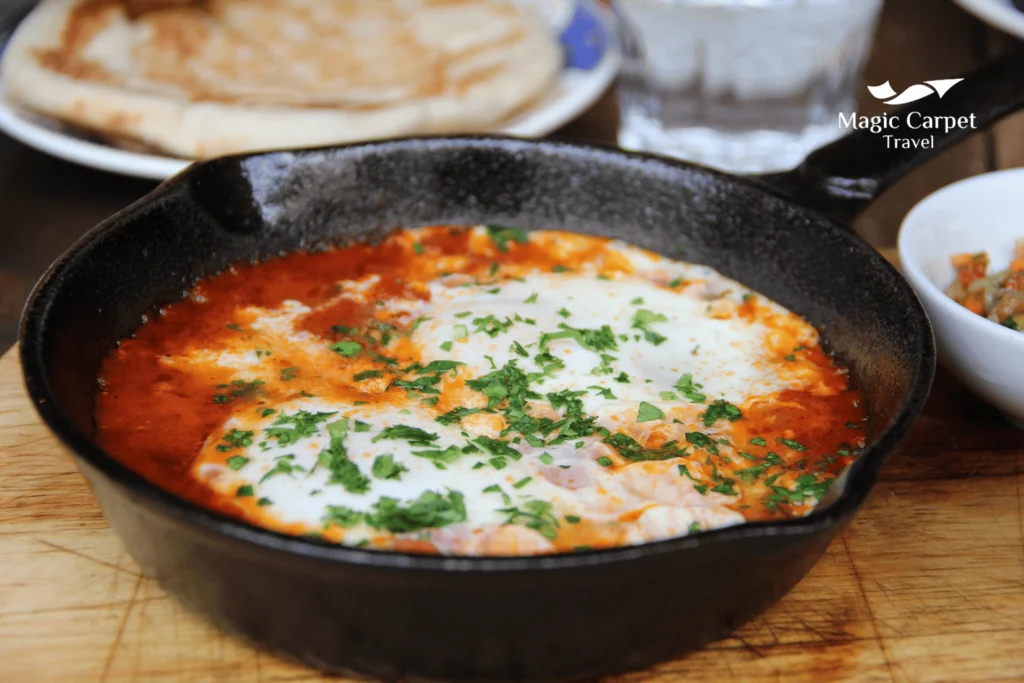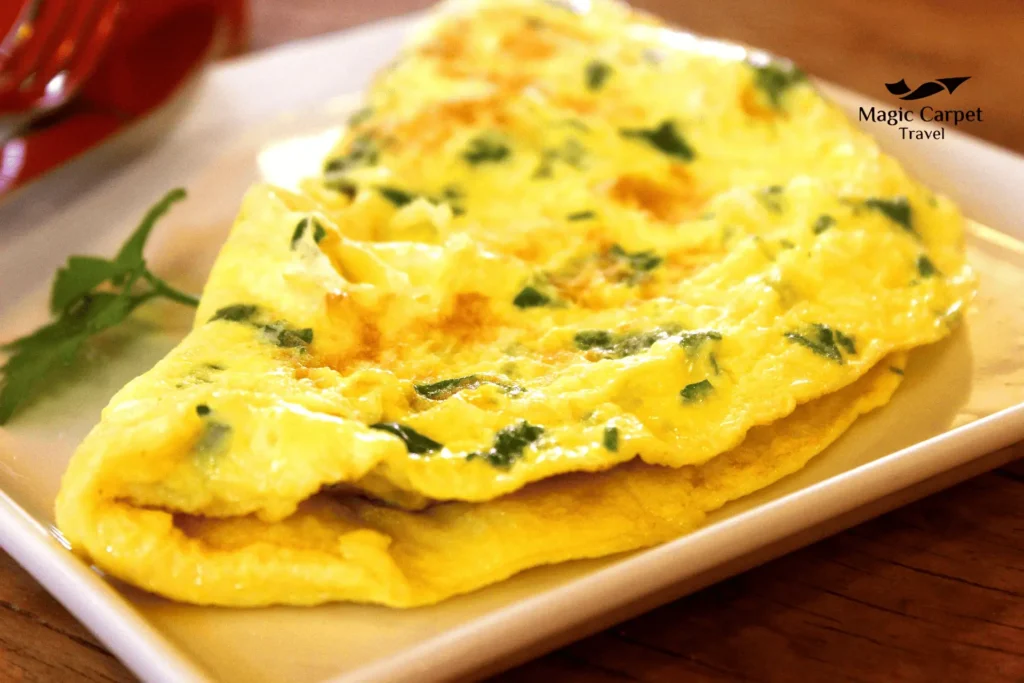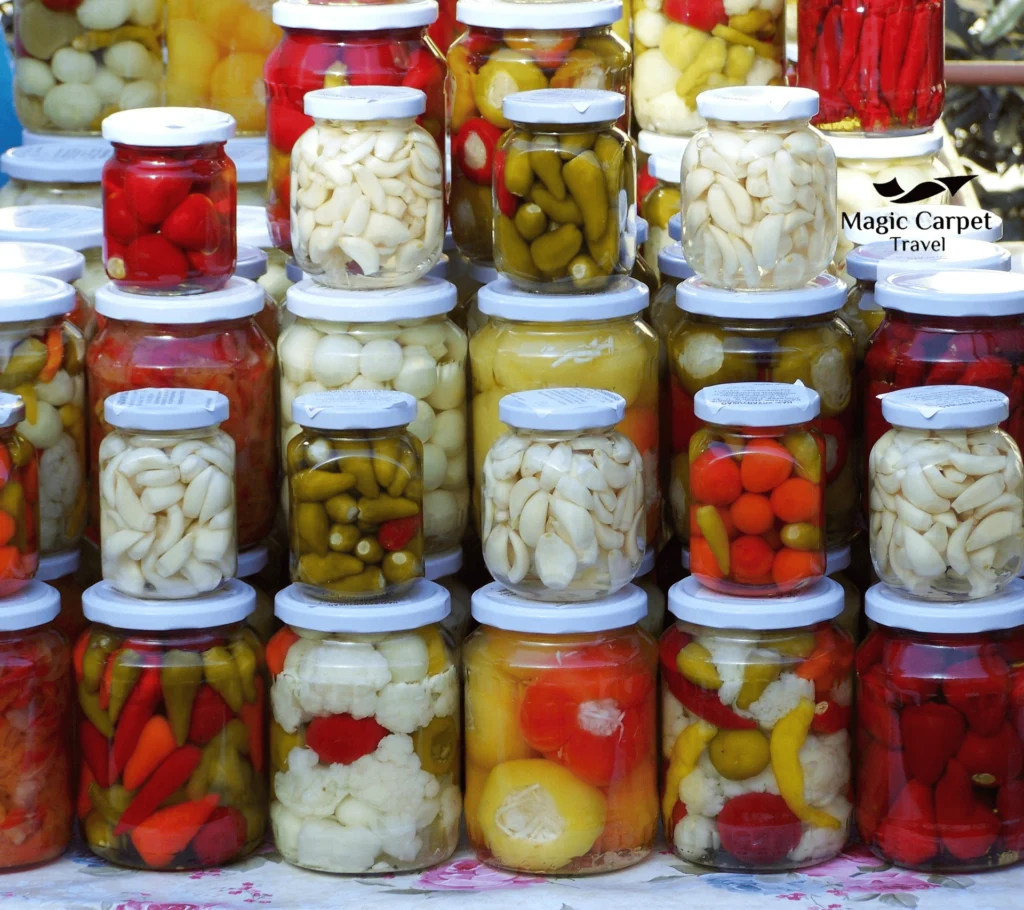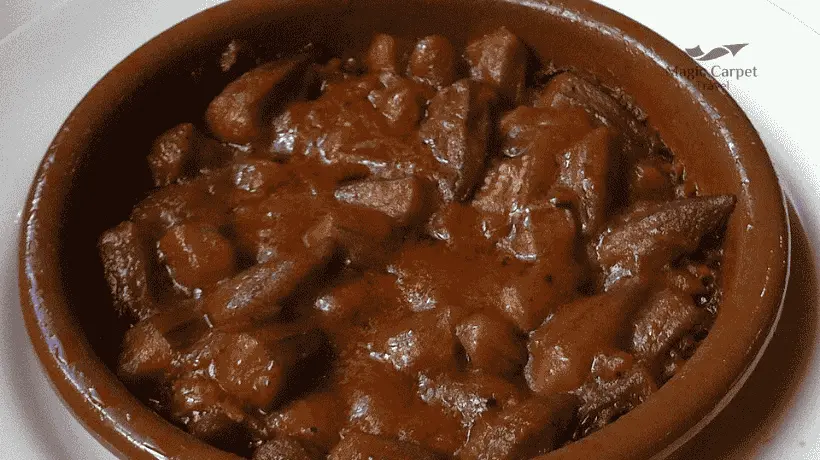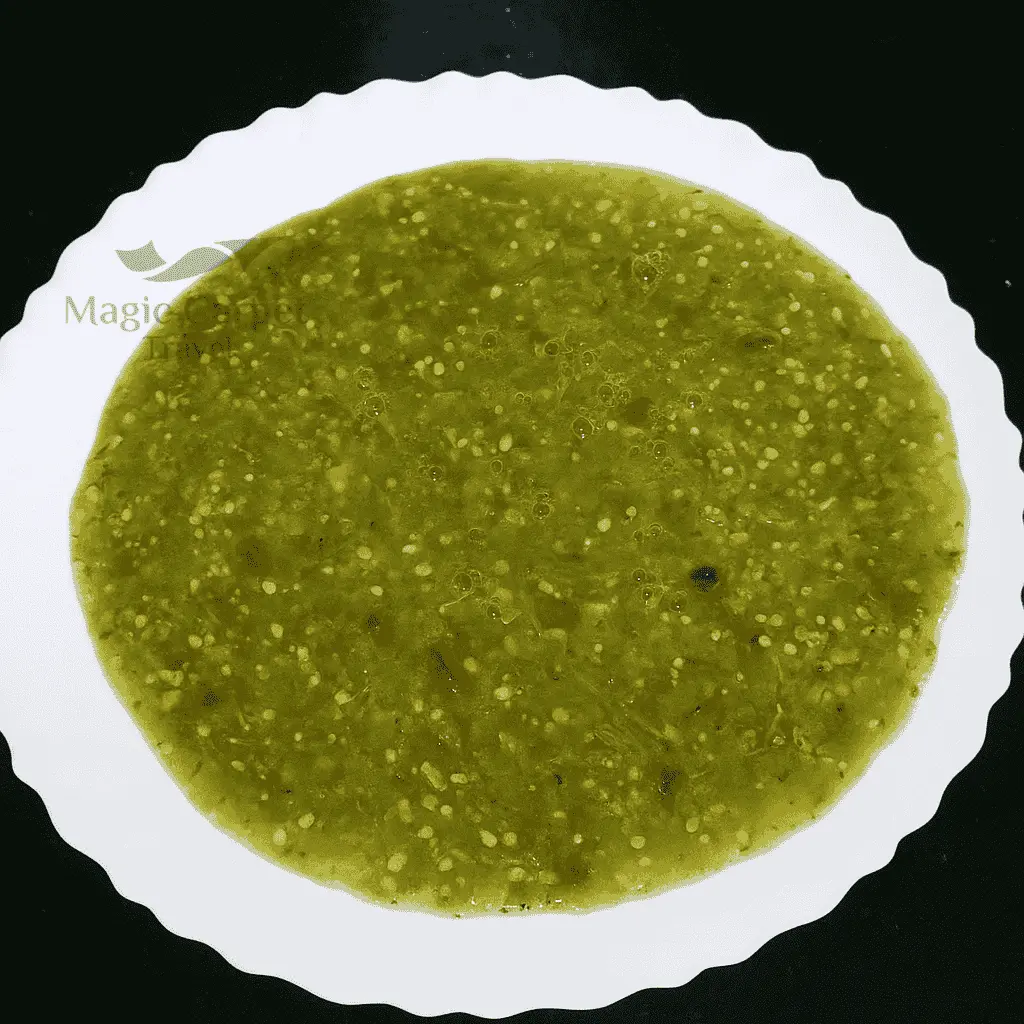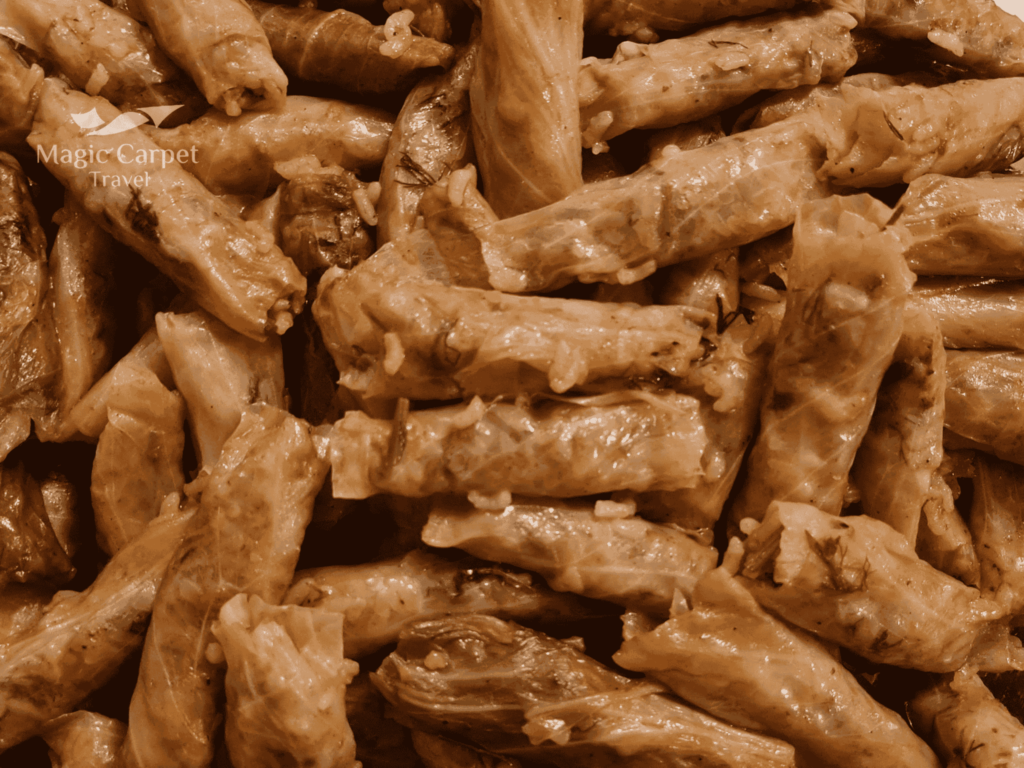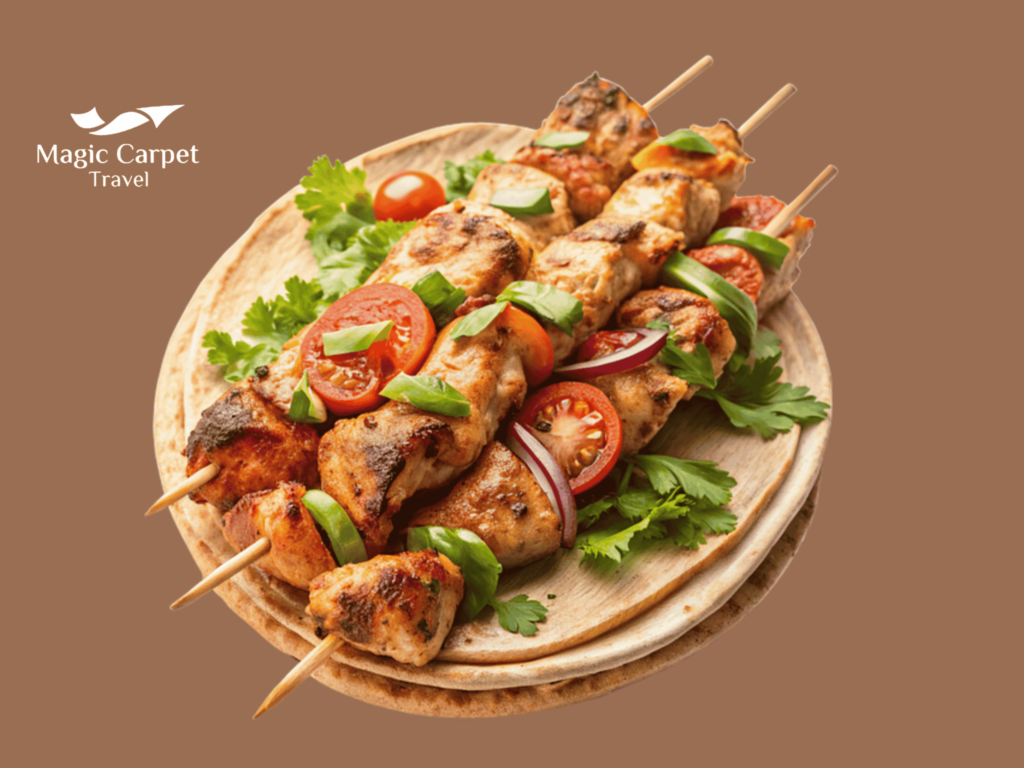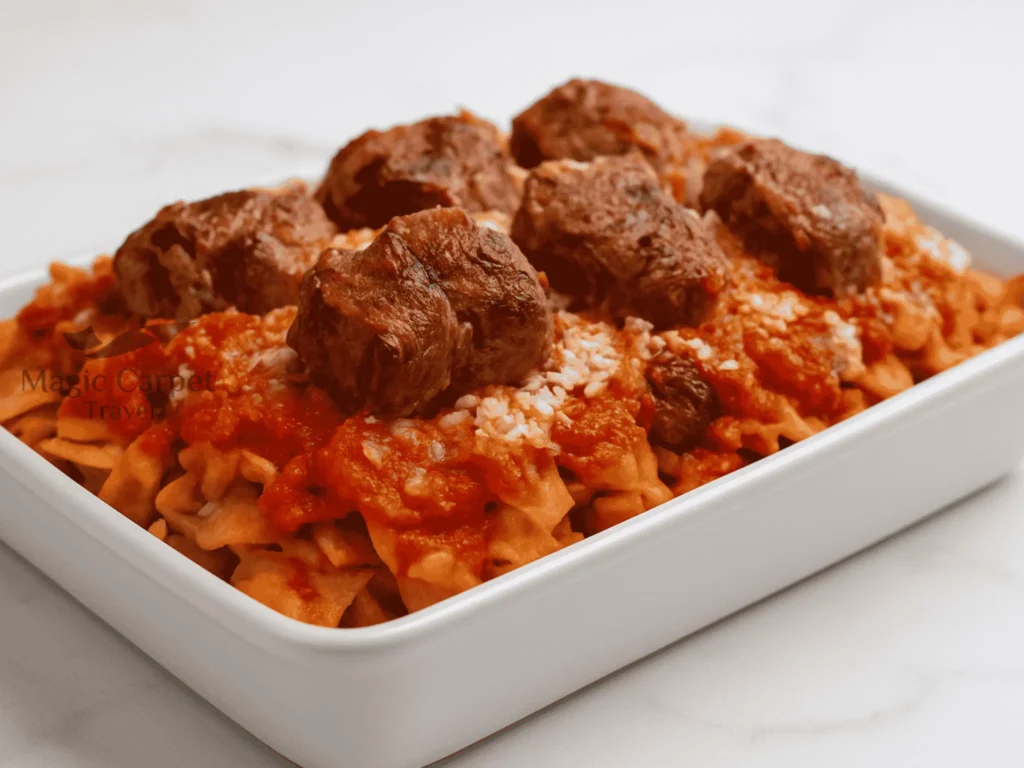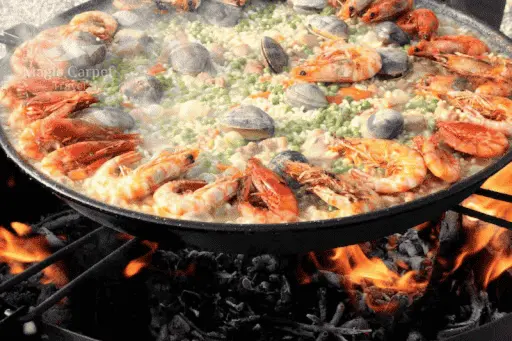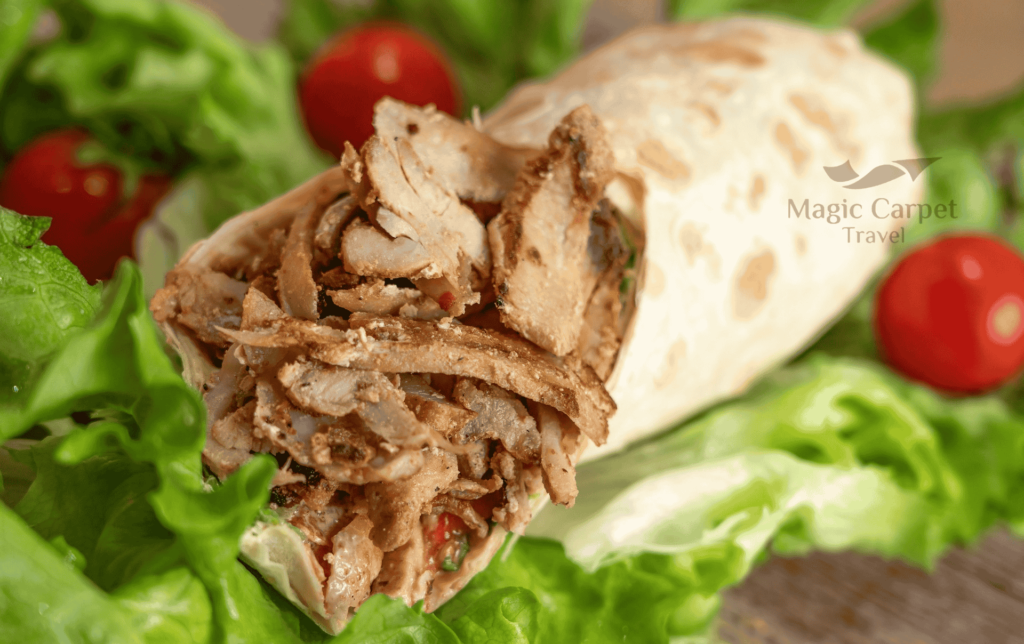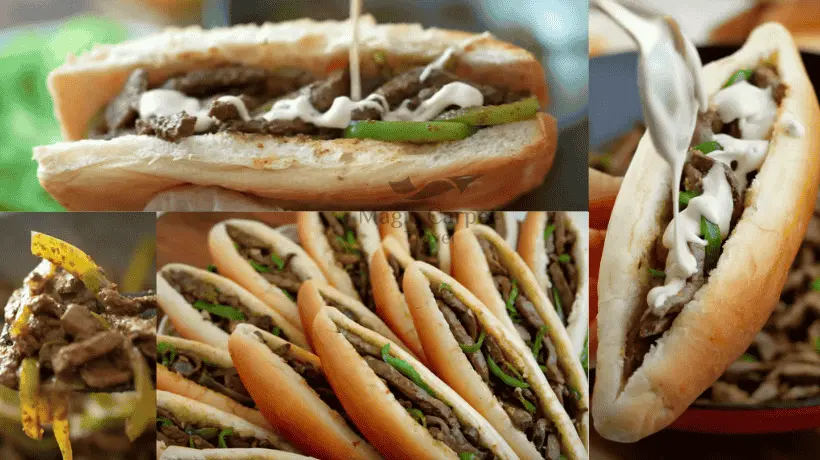7 Easy Egyptian Food Recipes: Koshari, Hawawshi, .. with Calories!
Table of Contents
Most of our Egypt travelers or even culinary explorers wish to know the secrets behind Egyptian recipes of the dishes they try throughout their trip in Egypt.
And when they go back, they often try to tackle those recipes themselves. But here’s the catch: Almost 95% of websites that offer Egyptian food recipes aren’t Egyptian at all, thus they don’t have our expertise or know the secrets we know as Egyptians of making Egyptian dishes the right way!
And if you tried other websites’ way, all what you get is a Mediterranean or a completely different version of what your tasting buds should find.
And to save your time, we’ve gathered for you the top 7 delicious Egyptian foods and recipes that you won’t help stop making them.
What Makes Egyptian Recipes Worth Trying?
From the dawn of history, Egyptian cuisine has its own fingerprint and unique taste that has made it known globally for its authenticity and deliciousness.
Just as we mentioned earlier in “What Makes Egyptian Food Unique?”, and after surveying our professional chefs, we can say that trying Egyptian recipes isn’t only a matter of eating food, it’s a whole new cultural experience that will leave you amazed!
Additionally, each of the Egyptian recipes has a long history, dating back hundreds and even thousands of years.
This can be seen easily on the temples’ wall paintings and carvings that depict the making of Baladi Bread and Areesh Cheese in:


Read the full guide of the Top 20 Traditional Dishes of Egypt You Can’t Miss.
What are the Top Egyptian Food Recipes with Step-by-Step Instructions (with calories)?
Now, we’ll take your hands and walk you through our chefs’ best recipes for each of the Egyptian food and recipes that will give you the delicate taste of each ingredient.
Koshari Egyptian Food Recipe (450 ~ 500 Calories/ dish)
Koshari, Kushari, or Koshary, all refer to the one and only national dish of Egypt, which you can find in every corner and street, and as an Egypt visitor, you’ll definitely fall in love with it from the first bite.
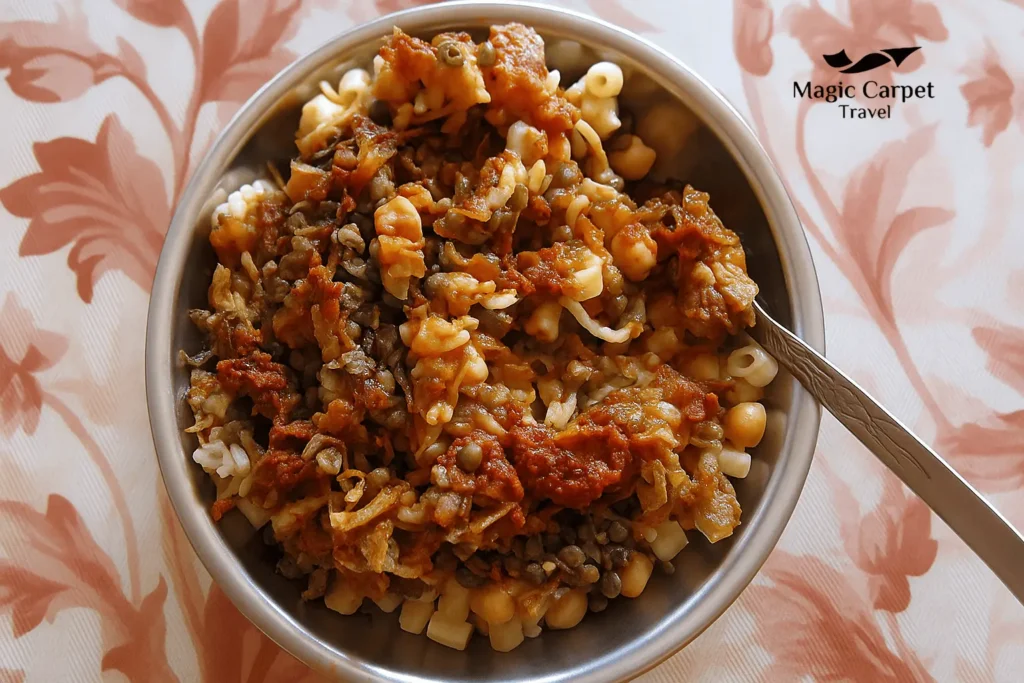
What is Koshari made of?
Koshari is mainly made of rice, lentils, pasta, chickpeas, tomato sauce, and fried onions, and is usually served with garlic vinegar, chili sauce, and Koshari toast (Egyptian Shamy bread fried in oil).
The Koshari recipe brings together simple ingredients in a unique and harmonious combination that’s built in layers, each adds texture and flavor. Here is the Koshari recipe in detail:
- White rice, which forms the base, gives body and balance.
- Brown lentils, cooked and mixed with the rice for a protein-rich layer.
- Macaroni & Pasta, specifically elbow macaroni that makes it extra filling and hearty.
- Chickpeas, a small handful of boiled chickpeas, sprinkled on top.
- Tomato Sauce with garlic, vinegar, and cumin that ties the taste together and adds depth.
- Crispy Fried Onions, and this is the final touch and the topping consisting of golden, crunchy onions, adding its signature to the flavor.
- OPTIONALLY, add Hot Chili Sauce or Garlic Vinegar Sauce (known as Daqqa in Arabic), which is a tangy dressing that boosts the flavor.
How to Make Egyptian Koshari Recipe Step by Step?
- Cook the Base
- White rice and brown lentils are boiled separately until tender.
- Cook pasta and set aside.
- Prepare the Toppings
- Chickpeas are boiled (or use canned chickpeas, just rinse and warm them).
- Onions that are thinly sliced and then fried until they get a golden-brown color and become crispy.
- Make the Tomato Sauce
- A tangy sauce is made with tomatoes, garlic, cumin, vinegar, and spices.
- Adjust chili or hot pepper for desired spiciness.
- Final Touches (Assembling the Dish)
- Start with rice and lentils.
- Add pasta, then chickpeas.
- Pour the spiced tomato sauce generously on top.
- Finish with crunchy fried onions.
- Serve the dish with da’qqa (garlic vinegar sauce) or chili sauce as side toppings.
Egyptian Hawawshi Recipe (350 – 450
Calories/ sandwich)
Hawawshi is one of the most delicious and authentic sandwiches you’ll ever try if you’re a mincemeat lover!
In Egypt, you’ll find Hawawshi easily as a street food or a local restaurant, served hot with tahini, pickles, or a side salad.

What is Hawawshi made of?
In short, Hawawshi is essentially made of baladi bread (Egyptian bread) stuffed with a seasoned minced meat mixture, then baked or grilled until it gets its unique golden color.
And the seasoned minced meat mixture typically includes:
- Ground beef or lamb
- Onions (finely chopped)
- Garlic
- Fresh parsley and coriander
- Green chili or bell pepper (optional)
- Spices such as cumin, paprika, salt, and black pepper.
The bread soaks up the flavorful juices of the seasoned minced meat mixture as it bakes, creating a crunchy exterior and a juicy interior. Some variations add a touch of ghee or butter to enhance the flavor.
Ingredients of Egyptian Hawawshi
- 500g (1 lb) ground beef or lamb.
- 1 large onion, finely chopped.
- 2 cloves garlic, minced.
- 1 green chili or bell pepper, diced (optional)
- ½ cup fresh parsley and coriander, chopped.
- 1 tsp cumin.
- 1 tsp paprika.
- ½ tsp cinnamon (optional, for warmth)
- Salt and black pepper, to adjust the taste.
- 4 – 5 pieces of baladi bread (or pita bread if baladi isn’t available)
- 2 tbsp butter or ghee (optional, for brushing)
How to Make Egyptian Hawawshi Recipe Step by Step?
- Prepare the filling in a bowl, mix ground meat with onion, garlic, chili, herbs, and spices until well combined.
- Stuff the bread by cutting open each piece of baladi bread halfway and filling generously with the meat mixture.
- Seal, press, and brush the bread slightly to seal, then brush with a little butter or ghee for extra crispiness.
- Bake in a preheated oven for 20–25 minutes, flipping halfway.
- Serve hot with tahini or pickles.
Remember: It’s best to enjoy Egyptian Hawawshi fresh from the oven, as it still has its crunchy bread and juicy fillings inside. It’s one of the most loved Egyptian street food recipes and a must-try for travelers and foodies exploring traditional Egyptian dishes.
Egyptian Molokhia Recipe (350-450
Calories/ dish)
The Egyptian Molokhia is a must-try classic dish made from finely chopped jute leaves cooked into a delicate green soup flavored with garlic and coriander. This dish is one of the most traditional Egyptian food recipes, often served with rice, chicken, or rabbit.
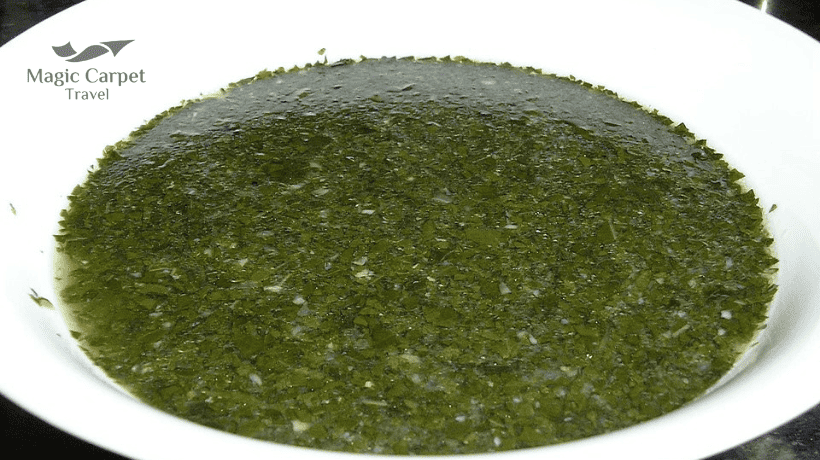
Ingredients for Egyptian Molokhia
- 400g (14 oz) frozen or fresh molokhia (jute leaves), finely chopped
- 1 whole chicken (or rabbit), boiled for broth
- 6–7 cloves of minced garlic
- 2 tbsp fresh chopped coriander.
- 3 tbsp butter or ghee.
- Salt and black pepper.
How to Make Egyptian Molokhia Recipe Step by Step?
- Prepare the broth by boiling chicken (or rabbit) in salted water until cooked, then strain and keep the broth.
- Cook the molokhia in a pot by adding the chopped molokhia to hot chicken broth. Stir gently and simmer (do not over-boil) until the soup thickens.
- Make the ta’leya (garlic-coriander sauté) in a small pan by melting the butter, and then add the garlic & coriander and fry until golden and fragrant.
- Combine all by pouring the ta’leya into the molokhia pot and stir well, and finally, season with salt and pepper.
- Serve hot into bowls with rice or bread, alongside pieces of chicken or rabbit.
Serving Tip
Try a final touch of squeezing a lemon for extra freshness. Remember, this is a remarkable dish that’s deeply tied to traditional Egyptian cooking culture and suits anyone exploring authentic Egyptian food recipes.
Egyptian Ful Medames Recipe (300-350
Calories/ dish)
Among the dishes we highly recommend for our travelers for breakfast is the fabulous Egyptian Ful Medames (aka. fava beans), as it’s considered one of Egypt’s oldest and most traditional dishes, dating back to the ancient Egyptian era.
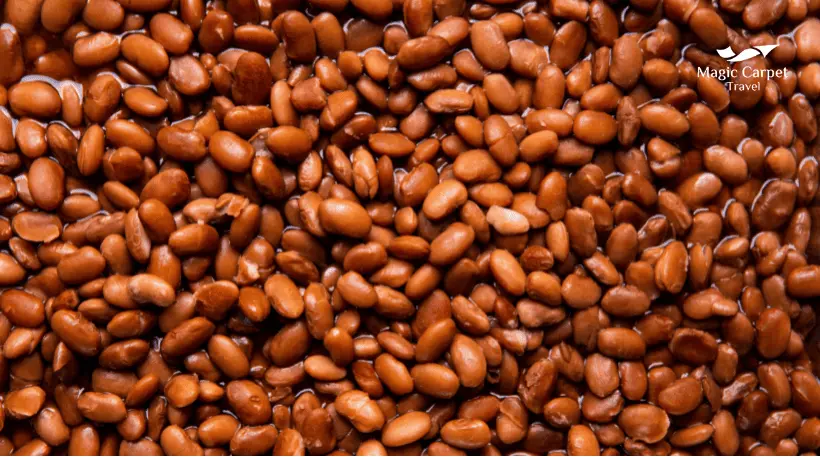
Ingredients for Egyptian Ful Medames
- 2 cups dried fava beans (or 2 cans cooked fava beans, drained)
- 3–4 cloves garlic, minced
- 2 tbsp olive oil (plus extra for serving)
- Juice of 1 lemon
- 1 tsp cumin
- Salt and black pepper, to taste
- Optional toppings: chopped parsley, diced tomatoes, onions, boiled eggs, or tahini
- Served with warm baladi bread (pita).
Wondering what else you can eat for breakfast?
Know the full list of breakfast dishes for Egyptians and eat like an Egyptian!
What is the Ful Medames Recipe Step by Step?
- Cook the beans if you’re using dried fava beans; soak overnight, then simmer until soft. If using canned, rinse and heat gently right away.
- Mash lightly using a fork or potato masher; mash the beans into a coarse.
- Season with garlic, cumin, olive oil, lemon juice, salt, and pepper. Adjust flavor as you prefer.
- Serve the dish warm with Egyptian baladi bread or pita.
Serving Tip
Pair the Ful Medames dish with ta’ameya (Egyptian falafel) or boiled eggs for a more hearty, authentic Egyptian meal.
Egyptian Falafel Recipe (aka. Taameya) (400–500 calories/sandwich)
The Egyptian Falafel recipe, which is locally known in Egypt as Taameya, is an Egyptian street food recipe that’s known as a delicacy to both locals and travelers. Falafel consists mainly of fava beans and fresh herbs, giving it a lighter, greener, and more flavorful taste.
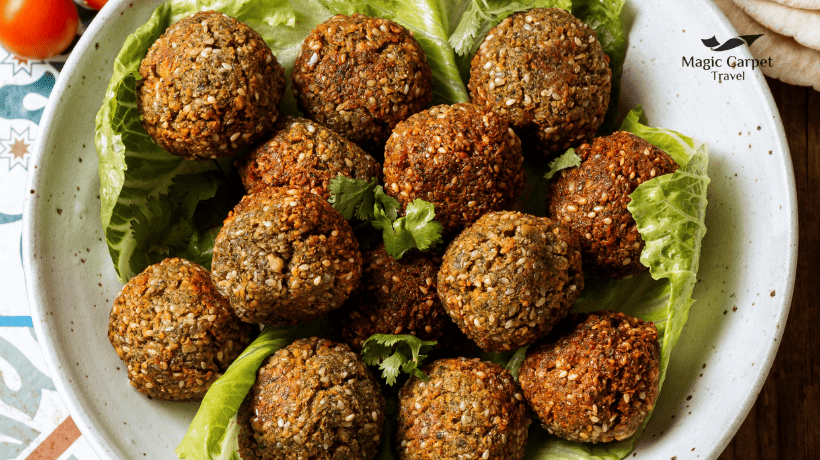
Ingredients of Egyptian Falafel (Ta’ameya)
- 2 cups dried split fava beans (soaked overnight)
- 1 medium chopped onion,
- 4 – 5 cloves minced garlic.
- 1 cup of mixed fresh parsley, dill, and coriander.
- 1 tsp cumin.
- 1 tsp coriander powder.
- ½ tsp baking soda.
- Salt and black pepper.
- Vegetable oil for frying.
- Sesame seeds (optional, for coating)
What is the Egyptian Falafel Recipe Step-by-Step?
- Soak fava beans in water overnight until softened and drain well.
- Blend the mixture in a food processor by adding beans, onion, garlic, and herbs until it turns into a thick paste.
- Season with cumin, coriander, baking soda, salt, and pepper. Let the mixture rest for 30 minutes.
- Shape the falafel into small patties or balls. Optionally coat with sesame seeds.
- Fry until golden in a deep pan, and fry patties until crisp and golden brown on both sides.
- Serve hot inside baladi bread (Egyptian pita) with salad, tahini, or Ful Medames.
Serving Tip
Egyptian falafel is often paired with Ful Medames for a complete Egyptian breakfast. And this unique use of fava beans makes it stand out as one of the most authentic traditional Egyptian food recipes.
Egyptian Lentil Soup Recipe (180-220
Calories/ dish)
The Egyptian Lentil Soup recipe, which is locally known as Shorbat Ads, is a winter dish known as a warm, hearty, and nutritious dish made with red lentils, vegetables, and spices, and is considered one of the most common authentic Egyptian foods and recipes, and is often enjoyed in winter and during Ramadan for its comforting and filling qualities.
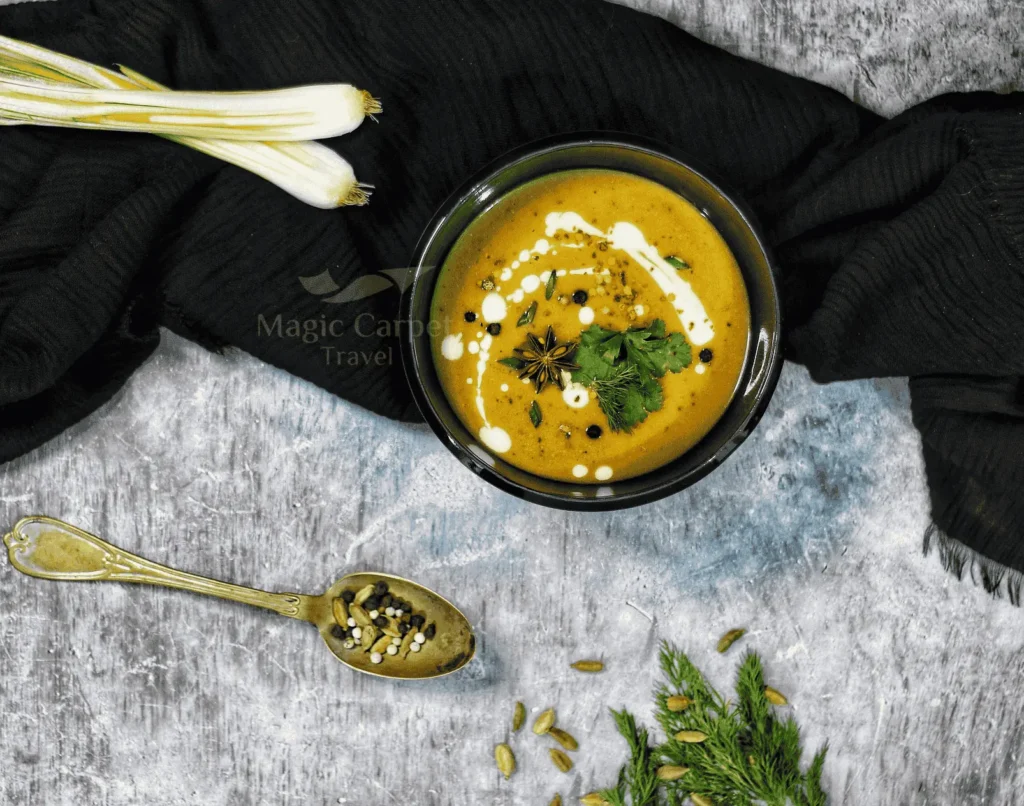
Ingredients of Egyptian Lentil Soup
- 1 cup of rinsed red lentils.
- 1 large chopped onion.
- 2 cloves of minced garlic.
- 1 diced carrot.
- 1 chopped tomato.
- 1 tsp cumin.
- 4 cups vegetable or chicken broth.
- 2 tbsp olive oil or butter.
- Salt and black pepper.
- Lemon for serving.
- Baladi bread for dipping
What is the Egyptian lentil soup Recipe Step-by-Step?
- Sauté the vegetables in a pot, heat olive oil or butter, and sauté the onion, garlic, carrot, and tomato until all are softened.
- Add lentils, broth, cumin, and turmeric. And as it boils, simmer for 20–25 minutes until the lentils are tender.
- Blend for smoothness using a hand blender to puree until smooth or your preferred texture.
- Season with salt and pepper and adjust thickness with more broth if needed.
- Serve warm into bowls with warm baladi bread.
Lentil Soup Serving Tip
Try serving Lentil soup with fresh lemon as it adds a refreshing, unique taste to the dish.
Egyptian Kofta Recipe (450 – 550 Calories/sandwich)
Egyptian Kofta is a juicy, smoky, and full of flavor traditional Egyptian food, which smell will hook you from miles away as it’s grilled and it’s mainly made from ground meat mixed with onions, herbs, and spices, then shaped into skewers and grilled. This delicacy is a staple in Egyptian kitchens and is often served at celebrations and family meals.

Ingredients for Egyptian Kofta
- 500g (1 lb) ground beef or lamb.
- 1 medium grated and drained onion.
- ½ cup fresh, finely chopped parsley.
- 2 cloves of minced garlic.
- 1 tsp cumin.
- 1 tsp coriander powder.
- ½ tsp cinnamon.
- Salt and black pepper.
- Skewers.
What is the Egyptian Kofta Recipe Step-by-Step?
- Prepare the mixture in a large bowl by mixing ground meat with onion, parsley, garlic, and spices until well combined.
- Shape the kofta by taking small portions of the mixture and molding them around skewers into sausage-like shapes.
- Grill the kofta by preheating the grill or pan and cooking the kofta skewers over medium-high heat until browned and cooked through (about 10–12 minutes), turning occasionally.
- Serve hot with rice, salad, or warm baladi bread.
Serving Tip
Try serving Egyptian Kofta with tahini sauce, grilled vegetables, or rice dishes like Sayadiya.
FAQs
1. How to make ancient Egyptian food recipes?
Ancient Egyptian food recipes focused on bread, beans, and stews. A simple version is lentil soup or flat baladi bread baked over clay. These traditional dishes of Egypt inspired modern Egyptian foods and recipes like Ful Medames and Koshari, which remain central to Egyptian cuisine.
2. How to make Egyptian food recipes?
To make Egyptian food recipes, start with staples like fava beans, rice, lentils, and bread. Popular Egyptian cooking recipes include Koshari Egyptian Food Recipe, Ful Medames, and Egyptian Hawawshi. Many are simple Egyptian food recipes using basic spices like cumin and coriander, making them easy to cook at home.
3. What is Egypt’s most popular food?
Egypt’s most popular food is Koshari, a mix of rice, pasta, lentils, and chickpeas topped with spiced tomato sauce and crispy onions. As the national dish of Egypt, this recipe appears in nearly all guides to traditional dishes of Egypt and is a must-try for travelers.
4. What is the national dish of Egypt?
The national dish of Egypt is Egyptian Koshari, a hearty street food made of rice, lentils, pasta, chickpeas, and tomato sauce. Among all Egyptian food dishes, Koshari best represents the country’s identity, combining history, affordability, and bold flavors in one traditional meal.
5. What is the Egyptian special dish?
A special Egyptian dish is Hawawshi, baladi bread filled with spiced minced meat and baked until crisp. Alongside Koshari and Molokhia, it highlights the variety of Egyptian dishes recipes. These Egyptian foods and recipes are staples in households and popular as street food.
6. What is the main meal of the day in Egypt?
In Egypt, the main meal of the day is lunch. Families often share traditional dishes of Egypt, such as Mahshi, grilled meats, Fatta, or Egyptian Hawawshi. These hearty Egyptian foods and recipes form the center of Egyptian hospitality and daily eating habits.
7. What do Egyptians eat for breakfast?
A traditional Egyptian breakfast includes Ful Medames, Taameya (Egyptian falafel), baladi bread, and pickled vegetables. These Egyptian food dishes are among the easiest Egyptian food recipes to prepare, and they remain staple Egyptian dishes recipes served across the country.
8. What is the most famous dessert in Egypt?
The most famous Egyptian dessert is Umm Ali, a bread pudding made with pastry, milk, nuts, and sugar. Other popular Egyptian food and recipes for desserts include Basbousa, Konafa, and Rice Pudding. These traditional dishes of Egypt are tied to festivals and family gatherings.
9. What are common Egyptian dishes?
Common Egyptian food dishes include Koshari, Ful Medames, Taameya, Molokhia, Mahshi, Egyptian Hawawshi, grilled meats, and lentil soup. These staples appear in most Egyptian food recipes, easy to prepare at home, reflecting the essence of Egyptian foods and recipes enjoyed daily.
10. What is Egypt’s most famous dish?
Egypt’s most famous dish is Koshari Egyptian Food Recipe, a combination of lentils, rice, pasta, chickpeas, and spiced tomato sauce. It is the highlight of traditional dishes of Egypt and appears in nearly all collections of Egyptian dishes recipes as the country’s signature meal.
11. What is the oldest Egyptian dish?
The oldest Egyptian dish is lentil soup (Shorbat Ads), dating back to around 4000 BC in ancient Egypt. Archaeological findings show that lentils were a staple crop and often cooked into hearty soups. This dish remains central in traditional dishes of Egypt and is still one of the most common Egyptian food recipes today.


